Four-Iwan buildings are architectural masterpieces characterized by their four-sided domed structure with four portal entrances. They represent the history and culture of Iran. These buildings, known as “Chahartaqi,” consist of four sections: the arch, dome, porch, and entrance, exhibiting exquisite beauty and unique architecture. These Four-Iwan structures serve as symbols of Iran’s history and culture, attracting domestic and international tourists and showcasing the intersection of history and art. If you are interested in authentic Iranian architecture, stay with us in this article by Eligasht to become familiar with the famous Four-Iwan in Iran.
Book Iran Air flights from London to Tehran and Tehran to London with Eligasht UK:
1. Iranian Four-Iwans: Timurid Shirvan Four-Iwans
Timurid Shirvan Four-Iwans is one of the architectural masterpieces from the Timurid era, located in the village of Shirvan in North Khorasan. This octagonal Four-Iwan structure closely resembles a mausoleum and is believed by historians to be the burial place of Amir Timur. This monument is not only known for its architectural significance as a famous Four-Iwan but also recognized as a historical landmark of Iran, captivating researchers and art and history enthusiasts with various narratives surrounding it.
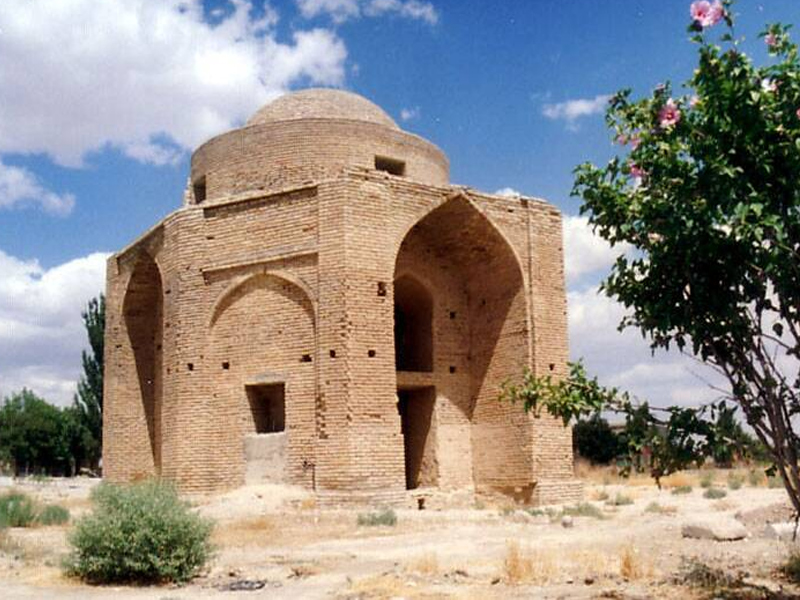
2. Iranian Four-Iwans: Botkhaneh Atashkooh Four-Iwans
Botkhaneh Atashkooh Four-Iwans is another Iranian Four-Iwans monument located in the western foothills of MountAtashkooh, in the village of Atashkooh, approximately 16 kilometers from Delijan. This Four-Iwans structure was registered as a national heritage site in 1317 and serves as an important example of architectural Four-Iwans in Iran. It has remained intact and is recognized as a tourist destination.
3. Four-Iwans in Iran: Milmiluneh Four-Iwans
Milmiluneh Four-Iwans is one of the extraordinary architectural masterpieces from the Sassanian era, situated in the city of Mahallat, 5 kilometers away from Markazi Province. This structure was registered as a national heritage site in 1386 and is considered one of the most significant cultural heritage sites in Iran. Milmiluneh Four-Iwans has become a symbol of Iran’s history and culture, attracting the attention of tourists and enthusiasts of ancient art and history. It holds great historical and cultural value.
Related post
Famous and Historical Churches of Isfahan
10 of the Most Famous Ancient Baths in Iran
4. Iranian Four-Iwans: Nevis Four-Iwans in Tafresh
Nevis Four-Iwans, located 17 kilometers from the city of Tafresh, in the foothills of the Nevis village, is a square-shaped Four-Iwans structure consisting of four pillars and four iwans with a dome. Nevis Four-Iwans is another Iranian Four-Iwans monument registered as a national heritage site, representing a unique example of Four-Iwans in Iran, with historical and cultural significance. Combining beauty, history, and art, Nevis Four-Iwans remains a cultural and artistic treasure of Iran, attracting tourists and art and history enthusiasts.
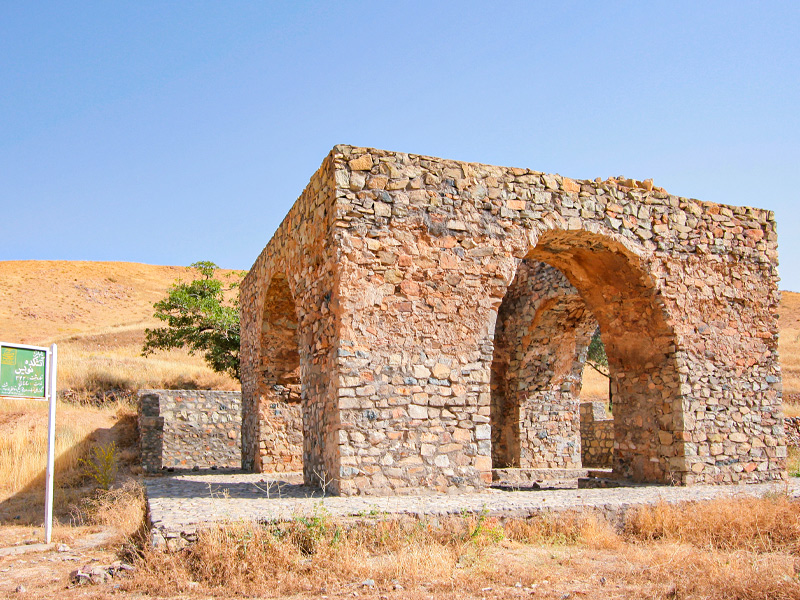
5. Iranian Four-Iwans: Niyasar Four-Iwans in Kashan
Niyasar Four-Iwans, one of the prominent architectural Four-Iwans from the Sassanian era, is located on the western cliffs of Niyasar in Kashan. This structure was built as a Zoroastrian fire temple by the order of Ardeshir Babakan, and Niyasar Four-Iwans is a part of this fire temple. Niyasar Four-Iwans is a rectangular-shaped four-sided structure with a length of 14 meters, constructed with the stones found in the region, and has become a tourist attraction in Kashan due to its unique architecture.
6. Iranian Four-Iwans: Khairabad Four-Iwans in Behbahan
Khairabad Four-Iwans, one of the important and historical Four-Iwans, is located 25 kilometers from the city of Behbahan, near the village of Khairabad. It is known as an architectural masterpiece. This Four-Iwans holds great significance due to its unique architecture and distinctive calendrical design compared to other Four-Iwans. It represents the position of the sunrise in the winter season.
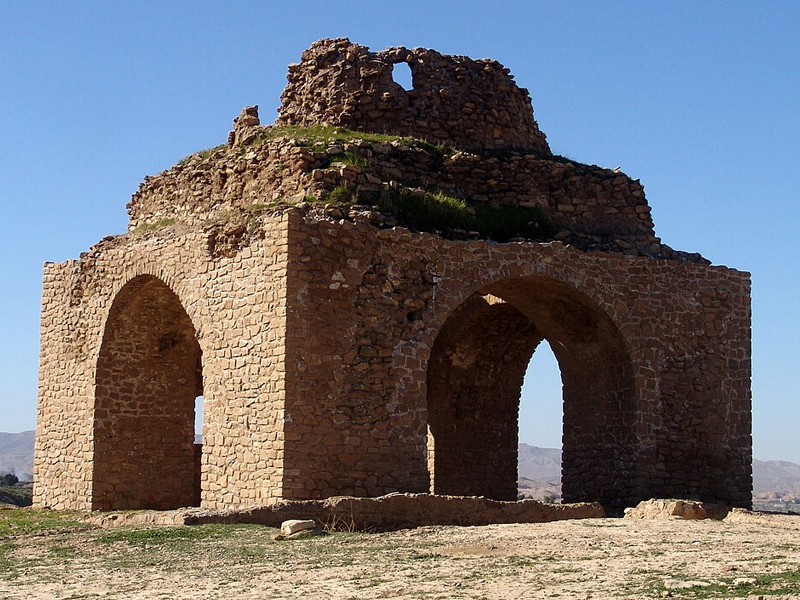
7. Four-Iwans in Iran: Karamjegan Four-Iwans in Qom
Kermajgan Four-Iwans is a valuable monument located near the village of Karamjegan in the northwest of Qom, which has been registered as a national heritage site. This beautiful structure was built during the Sassanian era and has a unique square-shaped structure. Unfortunately, it has suffered from negligence, destroying a significant part of the building. Currently, this historical structure is recognized as a cultural and tourist attraction in Qom, attracting the attention of many tourists.
8. Jameh Mosque of Golpayegan
Golpayegan Jameh Mosque, built during the Seljuk era, follows the architectural style of Iranian Islamic architecture. It was registered as a national heritage site in 1312. The Four-Iwans of Golpayegan Mosque, with its beautiful design and unique architecture, is an example of architectural art that has gained attention as a historical and cultural attraction for many tourists.
9. Jameh Mosque of Barsian
The Four-Iwans Jameh Mosque of Barsian is one of the Four-Iwans in Iran located in the city of Barsian, Isfahan Province. This Jameh Mosque is currently recognized as a historical attraction and was registered as a national heritage site in 1315. It is known as the third minaret of Isfahan, and despite the passage of time, it remains a cultural and historical landmark in the region.
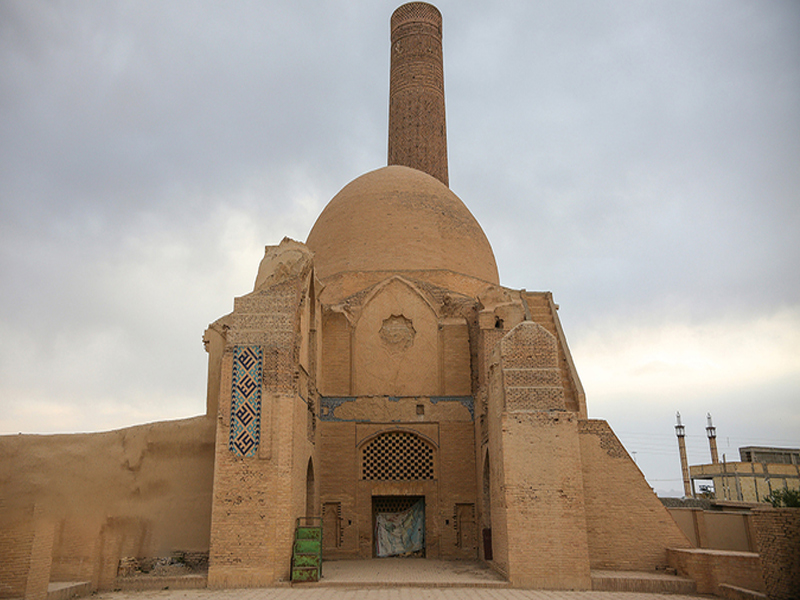
10. Jameh Mosque of Borujerd
The Four-Iwans Jameh Mosque of Borujerd is one of the important works of Iranian Islamic history and art located in the city of Borujerd, Lorestan Province. This Jameh Mosque, with its beautiful architecture and captivating artistic designs, is one of the most influential historical structures in the city, featuring a dome on its southern side. The Four-Iwans of Jameh Mosque of Borujerd resembles the Four-Iwans of the Sassanian period and is recognized as a cultural and artistic heritage of Borujerd, maintaining its status by attracting tourists and art and history enthusiasts.
11. Jameh Mosque of Qazvin
The Four-Iwans Jameh Mosque of Qazvin, also known as the Ancient Jameh Mosque, is one of the largest and oldest mosques in the city. The original construction of this mosque dates back to the time of Harun al-Rashid and was later converted into a fire temple during the Sassanian period. Over time, it was completed in the four-iwan style. The Four-Iwans of Jameh Mosque was registered as a national heritage site in 1310 and is still recognized as a prominent artistic and architectural masterpiece, attracting tourists and those interested in the culture and history of the region.
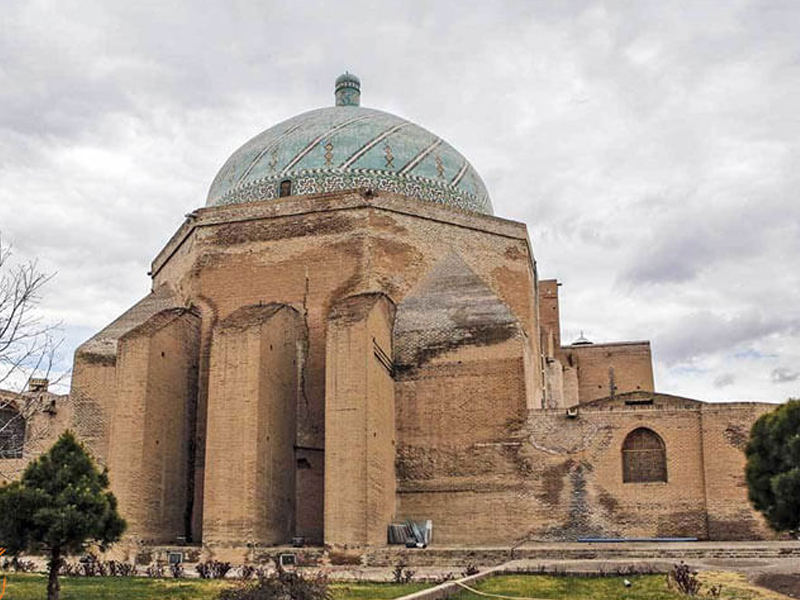
12. Four-Iwans of Khaneye Div
The Four-Iwans of Khaneye Div is one of the prominent historical and architectural symbols located in the remote northwestern mountains of Sabzevar in Khorasan Province. To reach this structure, one must traverse a hiking trail or use available lifts to ascend. The Four-Iwans of Khaneye Div has become a symbol of Iranian authenticity due to its inspiration from Iranian artistic elements. Besides its historical significance, it is known as a tourist attraction that has gained the attention of many visitors.
13. Four-Iwans of Bazehoor in Neyshabur
The Four-Iwans of Bazehoor is one of the cultural and historical attractions in Torbat-e Heydarieh County, Khorasan Province, near the village of Robat-e Sefid. This structure belongs to the Parthian period and was built alongside a river, which is now dried up. It is recognized as one of the symbols of Islamic art and architecture in the region. The Four-Iwans of Bazehoor, with its beautiful structure and sturdy walls, remains intact and untouched by any damage.
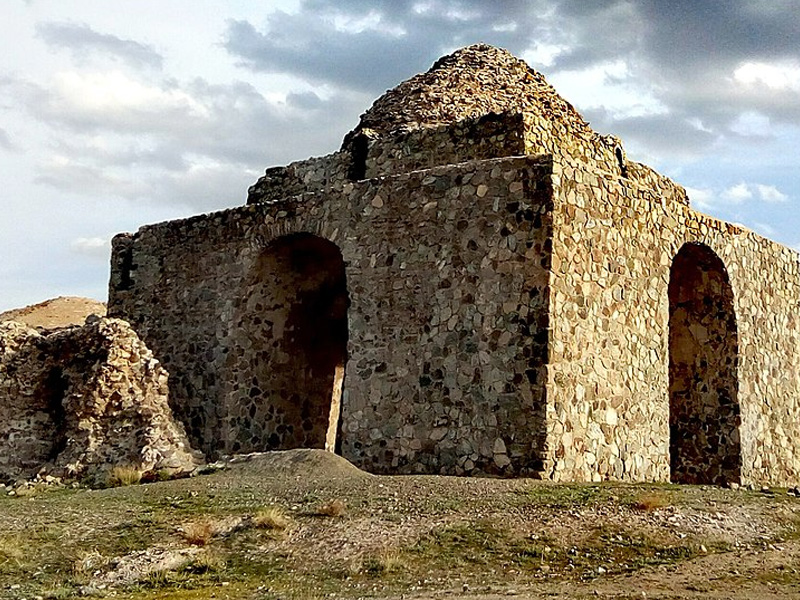
14. Four-Iwans of Charqapu in Qasr-e Shirin
The Four-Iwans of Charqapu is an architectural and artistic masterpiece in Qasr-e Shirin, Kermanshah Province. This structure was built during the Sassanian era and is recognized as an important historical and artistic work registered on the national heritage list. This location is not only significant as a local cultural and historical heritage but also renowned as a tourist attraction that attracts many visitors each year.
15. Four-Iwans of Kooshk in Natanz
The Four-Iwans of Kooshk is one of the cultural and historical landmarks in Natanz County, Isfahan Province. This structure was built by skilled architects during the Sassanian period and has been recognized as one of the symbols of Islamic art and architecture in the region since then. The Four-Iwans of Kooshk is located near the Natanz Bazaar and Jameh Mosque and is known as an important cultural and tourist heritage in the city.
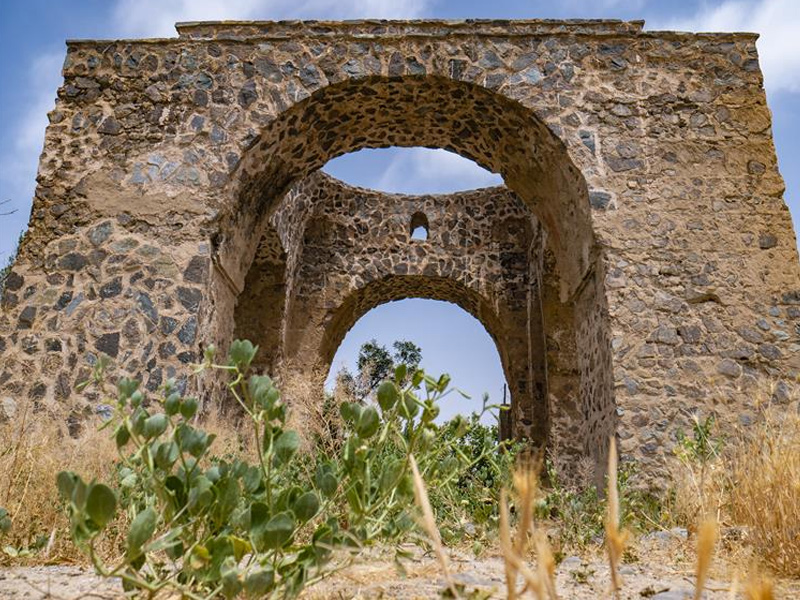
16. Four-Iwans of Chardari
The Four-Iwans of Chardari is a historical and cultural monument in the city of Nadushan, Yazd Province. This structure was built during the Safavid period and showcases the beauty and artistry of Islamic architecture. Apart from its historical and artistic value, this historical building is also a cultural and artistic center that was registered on the national heritage list in 2003. The Four-Iwans of Chardari is considered an important tourist attraction in this historic city, attracting the attention of visitors.
17. Four-Iwans of Gahvareh Did in Shiraz
The Four-Iwans of Gahvareh Did is a historical and architectural landmark in the city of Shiraz, Fars Province, situated on top of a mountain. This four-iwan structure was registered on the national heritage list in 1973 and is recognized as an elevated area from where you can see the city of Shiraz and its surrounding nature.
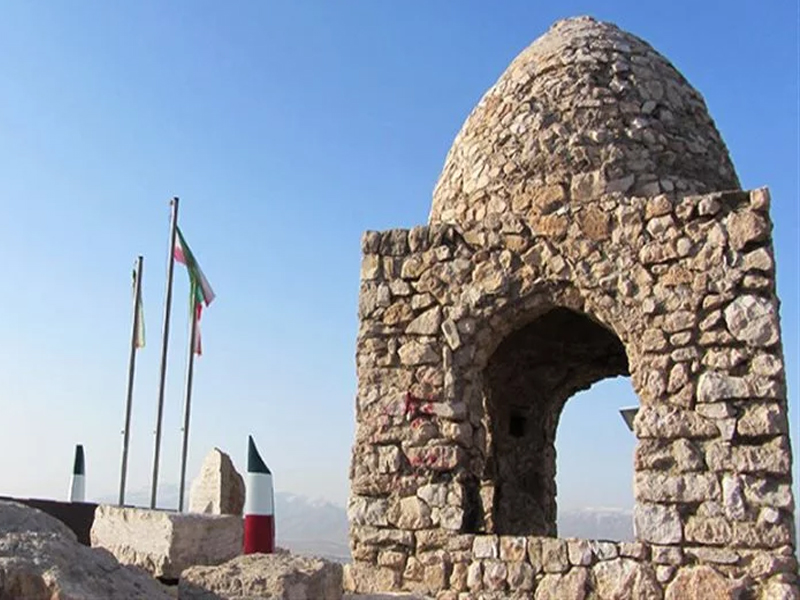
18. Four-Iwans of Firoozabad in Firoozabad, Fars
The Four-Iwans of Firoozabad is a historical and cultural monument in the heart of Firoozabad city, Fars Province. This structure is located near attractions such as Dokhtar Castle, Sassanian Fire Temple, Naghsh-e Tajgardan, and the city’s ancient cemetery. It is known as a tourist destination and a center for cultural activities in Firoozabad, maintaining a special place in this historic city.
19. Four-Iwans of Kazeroon
The Four-Iwans of Kazeroon is one of the Four-Iwans of Iran, situated in the city of Kazeroon, Fars Province. This structure, which was a Zoroastrian fire temple, was built during the Sassanian era and is introduced as an example of Islamic architectural art. The Four-Iwans of Kazeroon is recognized as a local cultural and historical heritage, attracting a large number of tourists and visitors each year. It is also considered a symbol of the cultural and artistic values of the city.
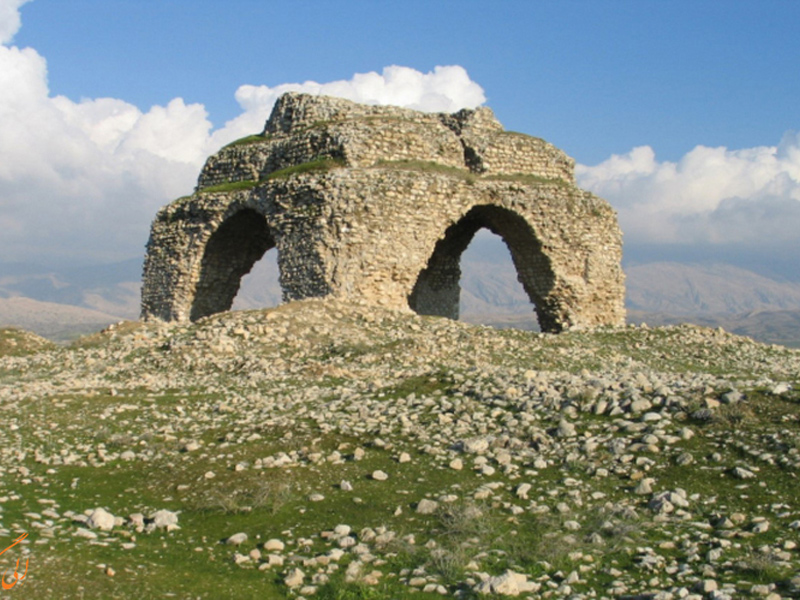
20. Char Taqi Mahalcheh (Fishour)
Char Taqi Mahalcheh, also known as Fishour, is one of the most important four-iwan structures in Iran, located in the city of Khonj. This building was constructed during the Sassanian period and is known for its beautiful art and architecture. It is not only recognized as a significant cultural and historical heritage in the region but also as a tourist attraction that draws the attention of visitors and enthusiasts of Iranian art and history.
Final words
The famous four-iwans in Iran are considered prominent symbols of the culture, history, and art of this land. With their unique structures, artistic tilework, and beautiful designs, these buildings have played a significant role in the advancement of Iranian Islamic architecture.
From Shiraz to Qazvin and from Kashan to Mahalcheh, each of these four-iwan structures is introduced as a symbol of the history and culture of this land. Additionally, these buildings play a crucial role in attracting tourists and enthusiasts of Iranian culture and are considered authentic Iranian architectural marvels.
FAQ
1- What is a four-iwan structure?
A four-iwan structure is a type of architectural design commonly found in Iranian and Central Asian Islamic architecture. It consists of a central courtyard surrounded by four iwans, which are large vaulted halls or chambers with open entrances on one side. Each iwan faces a different cardinal direction, creating a symmetrical layout. These structures are often seen in religious complexes, such as mosques, madrasas, and mausoleums.
2- What is the purpose of the four-iwan design?
The four-iwan design serves both functional and symbolic purposes. Functionally, it provides separate spaces for different activities, such as prayer, teaching, and gathering. Each iwan acts as a distinct space, accommodating specific functions. Symbolically, the four iwans represent the four cardinal directions, symbolizing the universality of the Islamic faith and providing a sense of balance and harmony in the overall architectural composition.
3- What are some famous examples of four-iwans in Iran?
Iran is home to several renowned four-iwan structures. Jameh mosque of Ghazvin, Four-Iwans of Kooshk in Natanz, and Niyasar Four-Iwans in Kashan are among the most important ones.

